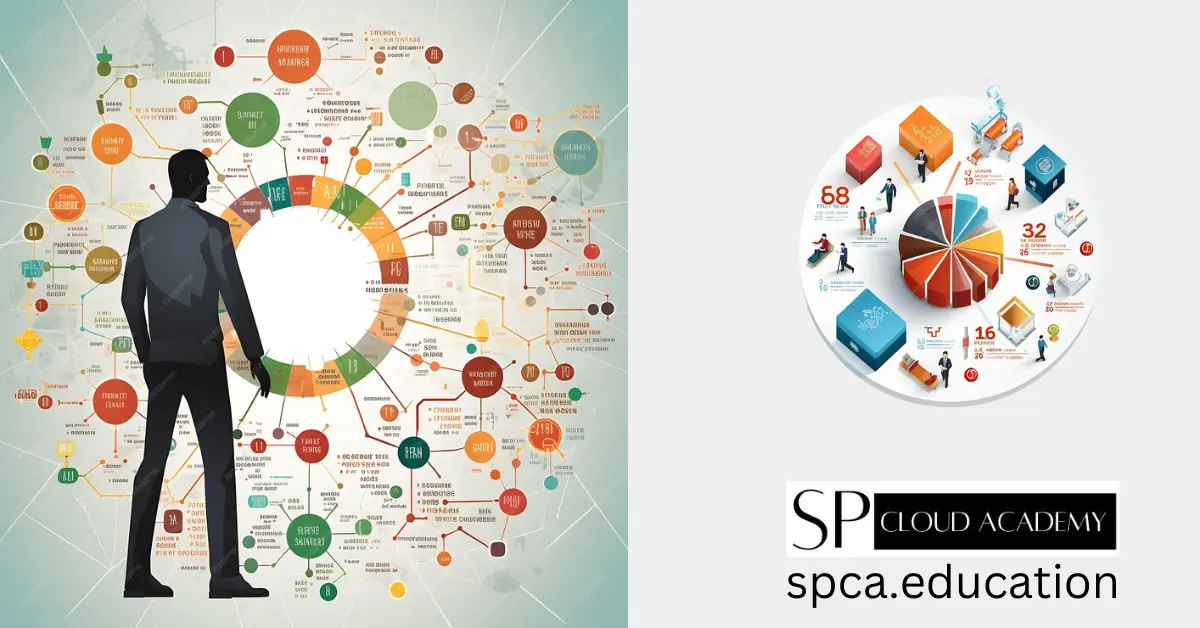In today’s fast-paced business environment, efficient decision-making is crucial for success. Every day, you are faced with numerous choices that can impact your organization’s growth and profitability. Making these decisions quickly and effectively can mean the difference between staying ahead of the competition or falling behind. That’s where a decision-making model comes in. By implementing a structured approach to decision-making, you can unlock efficiency and streamline the process. In this article, we will explore the importance of efficient decision-making, what a decision-making model is, the benefits of using one, different types of models, how to create your own, and how to implement it in your organization. So let’s dive in and discover how you can make better decisions and drive your organization’s success.
The Importance of Efficient Decision-Making
Efficient decision-making is the backbone of any successful organization. It allows you to capitalize on opportunities, mitigate risks, and respond quickly to changing market conditions. In today’s dynamic business landscape, the ability to make timely and informed decisions is more critical than ever. Without a streamlined decision-making process, you may find yourself stuck in a cycle of analysis paralysis, where important choices are delayed or avoided altogether. This can lead to missed opportunities, increased costs, and a loss of competitive advantage.
What is a Decision-Making Model?
A decision-making model is a structured approach that helps you make more informed and effective decisions. It provides a framework for analyzing options, evaluating risks and benefits, and selecting the best course of action. A model can be as simple as a checklist or as complex as a mathematical algorithm, depending on the nature of the decision and the resources available. The key is to have a systematic process that guides your decision-making and ensures consistency and objectivity.
Benefits of Using a Decision-Making Model
Using a decision-making model offers several benefits for individuals and organizations alike. Firstly, it provides clarity and structure to the decision-making process, reducing ambiguity and confusion. This, in turn, leads to more efficient and effective decision-making. A model also helps ensure that all relevant factors are considered, minimizing the risk of overlooking important information. Additionally, a decision-making model promotes consistency and reduces bias, as it provides a standardized approach that can be followed by anyone in the organization. By using a model, you can make decisions based on objective criteria rather than personal opinions or emotions.
Types of Decision-Making Models
There are various types of decision-making models, each suited for different situations and purposes. Let’s explore some of the most commonly used models:
- Rational Decision-Making Model: This model follows a logical and systematic approach, involving the identification of the problem, gathering of information, evaluation of alternatives, selection of the best option, and implementation of the decision.
- Intuitive Decision-Making Model: This model relies on gut feelings and instincts. It is often used in situations where time is limited, and there is a lack of complete information. Intuitive decision-making is based on past experiences and pattern recognition.
- Consensus Decision-Making Model: This model involves seeking input and agreement from all stakeholders before making a decision. It promotes collaboration, teamwork, and a sense of ownership among team members.
- Cost-Benefit Analysis Model: This model focuses on weighing the costs and benefits associated with different options. It helps quantify the financial impact of decisions and enables comparison between alternatives based on their economic value.
How to Create a Decision-Making Model
Creating a decision-making model requires careful consideration of your organization’s unique needs and objectives. Here are the steps to guide you in developing your own model:
- Identify Decision Criteria: Start by determining the key factors that should be considered when making a decision. These criteria could include cost, time, quality, risk, and strategic alignment, among others.
- Assign Weight to Criteria: Once you have identified the decision criteria, assign weights to each criterion based on its relative importance. This will help prioritize the factors and ensure that they are appropriately weighted during the decision-making process.
- Evaluate Alternatives: Generate a list of possible alternatives and evaluate them against the decision criteria. Consider the pros and cons of each option and assess their feasibility, impact, and alignment with organizational goals.
- Score Alternatives: Develop a scoring system to objectively evaluate the alternatives. Assign scores to each option based on how well they meet the decision criteria. This will provide a quantitative basis for comparing the alternatives and selecting the best one.
- Make the Decision: Based on the scores and evaluations, make an informed decision. Take into account the quantitative data as well as any qualitative factors that may influence the final choice.
- Implement and Evaluate: Once the decision has been made, it’s time to implement it and monitor the outcomes. Evaluate the results against your expectations and make adjustments if necessary.
Implementing a Decision-Making Model in Your Organization
Implementing a decision-making model in your organization requires a systematic approach and a commitment to change. Here are some steps to help you successfully introduce a decision-making model:
- Create Awareness and Buy-In: Clearly communicate the benefits of using a decision-making model to key stakeholders. Highlight how it can improve efficiency, increase consistency, and drive better outcomes. Obtain their support and commitment to implement the model.
- Train and Educate: Provide training and educational resources to employees to familiarize them with the decision-making model. Offer workshops, seminars, and online courses to develop their skills and understanding.
- Pilot Test: Begin by implementing the decision-making model in a small-scale pilot project. This will allow you to identify any challenges or areas for improvement before rolling it out organization-wide.
- Monitor and Evaluate: Continuously monitor the implementation of the decision-making model and gather feedback from employees. Evaluate its effectiveness and make adjustments as needed to ensure its successful integration into your organization’s culture.
- Recognize and Reward: Acknowledge and celebrate the successful implementation of the decision-making model. Recognize individuals and teams who demonstrate exceptional decision-making skills and outcomes. This will reinforce the importance of using the model and encourage others to adopt it.
Case Studies: Successful Implementation of Decision-Making Models
To further illustrate the benefits of using decision-making models, let’s explore a few real-world case studies:
- Company A: By implementing a rational decision-making model, Company A was able to streamline their product development process. They identified key criteria for evaluating new product ideas, assigned weights to each criterion, and evaluated alternatives based on these factors. This enabled them to make data-driven decisions and prioritize projects that aligned with their strategic goals. As a result, Company A experienced an increase in successful product launches and a reduction in time and cost overruns.
- Company B: Company B adopted a consensus decision-making model to improve collaboration and engagement among their team members. They created a structured process for gathering input from all stakeholders, ensuring that everyone had a voice in the decision-making process. This led to increased employee satisfaction, improved teamwork, and a sense of ownership among the team. Company B saw a significant decrease in conflicts and a more positive work environment.
- Company C: Using a cost-benefit analysis model, Company C was able to make informed financial decisions that maximized their return on investment. They carefully evaluated the costs and benefits associated with different options, considering factors such as upfront costs, long-term savings, and potential risks. This enabled them to allocate resources effectively and prioritize projects with the highest potential for financial success. Company C achieved significant cost savings and increased profitability as a result.
Tools and Software for Streamlining Decision-Making
In today’s digital age, there are numerous tools and software available to streamline the decision-making process. These tools can help you gather and analyze data, evaluate alternatives, and visualize the outcomes. Here are a few popular ones:
- Decision Matrix: A decision matrix is a simple yet powerful tool that helps you evaluate options based on multiple criteria. It enables you to assign weights to each criterion and score alternatives accordingly, providing a quantitative basis for decision-making.
- Decision Trees: Decision trees are visual representations of decision-making processes. They help break down complex decisions into a series of simpler choices, making it easier to understand the potential outcomes and their probabilities.
- Data Analytics Software: Data analytics software allows you to gather, analyze, and interpret large amounts of data to inform your decision-making. These tools help identify patterns, trends, and correlations that may not be apparent through manual analysis.
- Project Management Software: Project management software provides a centralized platform for managing and tracking decision-making processes. It helps streamline communication, collaboration, and documentation, ensuring that decisions are implemented effectively.
Training and Courses for Decision-Making Models
If you’re looking to enhance your decision-making skills or train your team on the use of decision-making models, there are numerous training and course options available. Here are a few recommendations:
- Decision-Making Skills Workshop: Attend a decision-making skills workshop to learn the fundamentals of effective decision-making. These workshops cover topics such as problem-solving techniques, critical thinking, and risk assessment.
- Online Courses: Online platforms offer a wide range of courses on decision-making models and techniques. These courses are self-paced and allow you to learn at your own convenience. Look for reputable platforms that offer certifications upon completion.
- In-House Training: Consider bringing in a decision-making expert to conduct a customized training session for your team. This can be tailored to your organization’s specific needs and challenges, ensuring a more targeted and impactful learning experience.
Conclusion
Efficient decision-making is a key driver of success in today’s business world. By implementing a decision-making model, you can streamline the process, make more informed choices, and achieve better outcomes. Whether you choose a rational, intuitive, consensus, or cost-benefit analysis model, the key is to have a structured approach that guides your decision-making and ensures consistency and objectivity. Remember, implementing a decision-making model requires a systematic approach, training, and a commitment to change. So start unlocking efficiency today and make better decisions that drive your organization’s success.
CTA: Explore our decision-making model training courses and take your decision-making skills to the next level!
See Also
Hybrid Workplace: https://spca.education/category/mobility/hybrid-workspace/
-

Google or Microsoft? Breaking Down the Ecosystem Battle for Your Daily Digital Life
-

Smarter Workspaces, Smarter Teams: The Ultimate Guide to a Productivity-Boosting Office Setup
-

The Ultimate Guide to File Management: Declutter Your Digital Life Today!
-

The Paperless Revolution: 7 DMS Platforms Set to Dominate Offices in 2025
-

Mastering IT Incident Response: A Comprehensive Framework for Corporate Security
-

Why Job-Related SOPs Are the Secret Weapon of Top IT Teams
